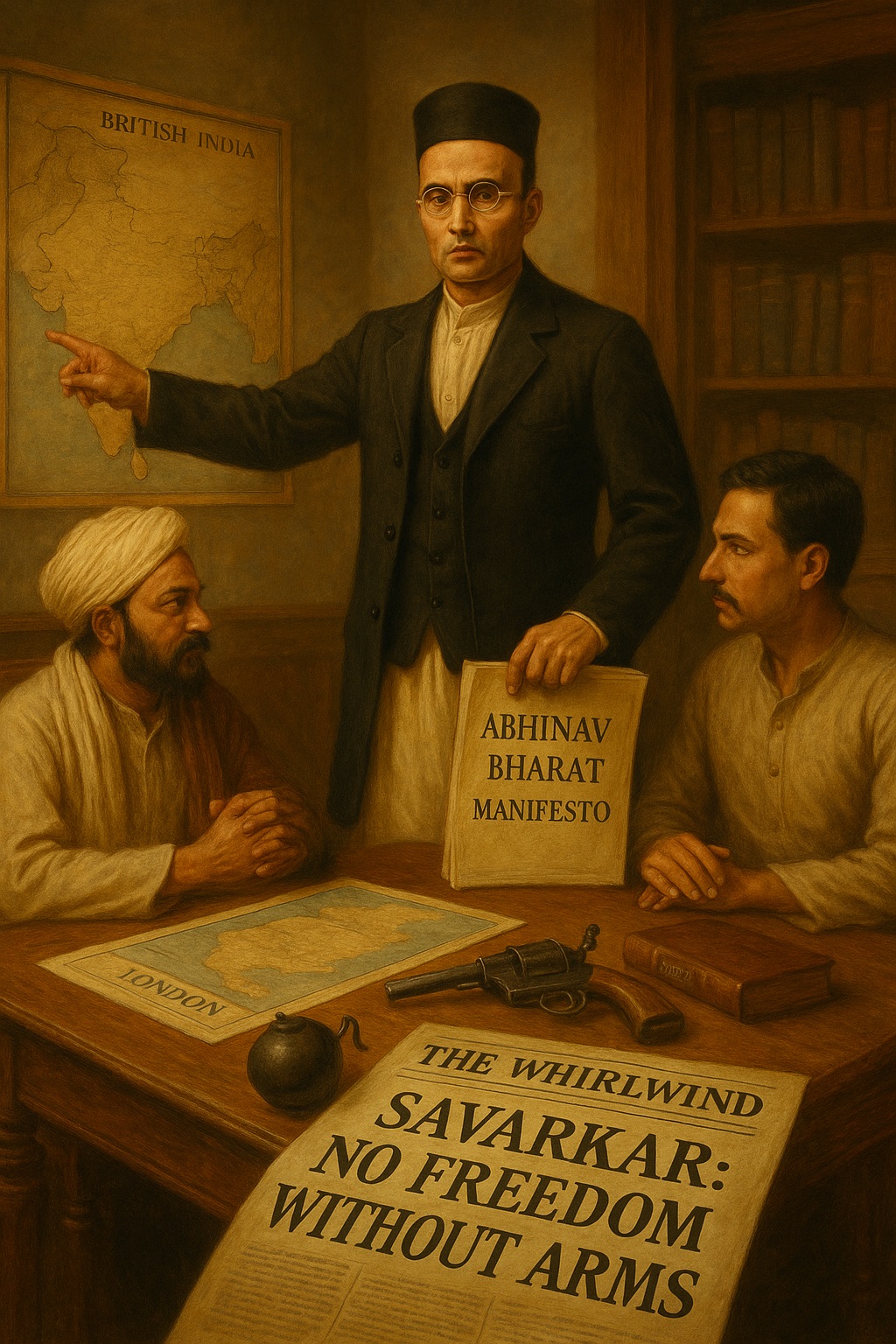From clandestine arms smuggling to guerrilla warfare – how Savarkar’s secret society laid the groundwork for a militant nationalist uprising.
Vinayak Damodar Savarkar understood a critical truth of political struggle: words alone – no matter how passionate or persuasive – are powerless without action. To that end, he moved beyond fiery speeches and writings, crafting a concrete, action-driven strategy aimed at overthrowing British colonial rule.
At the heart of this effort was Abhinav Bharat, a secret revolutionary society Savarkar (co-)founded. Though momentarily subdued in London, the organization rapidly took root across Europe and India. Under the capable leadership of V.V.S. Aiyar as Vice-President and Gyanchand Verma as Secretary, Abhinav Bharat issued a definitive Manifesto for India’s Liberation.
The Manifesto laid out a bold and uncompromising plan:
- Promoting Swadeshi ideals, boycott of foreign goods, and nationalistic education.
- Procuring and storing arms in neighboring countries.
- Establishing small-scale manufacturing units for indigenous production.
- Purchasing weapons abroad and covertly transporting them into India.
- Employing guerrilla warfare tactics where possible.
- Infusing patriotism within the ranks of Indian soldiers, with the aim of inciting defection or rebellion.
- Waiting strategically for the right moment to ignite a widespread armed revolt.
Among Savarkar’s most ambitious visions was the formation of a united (international) anti-British front, designed to synchronize multiple regional uprisings into one powerful, coordinated blow against the British Empire.
What if India’s independence movement had ignited with a coordinated, armed revolt across continents? Long before civil disobedience became the mantra of resistance, Savarkar envisioned a fierce, full-spectrum uprising. His secret society, Abhinav Bharat, was not just a dream of freedom – it was a plan for an armed struggle. What are your thoughts on Savarkar’s notion of an armed struggle against the British oppressors? Share your insights in the comments below!
Sources:
KEER, Dhananjay. 1988. Veer Savarkar. Third Edition. (Second Edition: 1966). Popular Prakashan: Bombay (Mumbai).
SRIVASTAVA, Harindra. 1983. Five stormy years: Savarkar in London (1906-1911) – A centenary salute to V.D. Savarkar. Allied: New Delhi.


Leave a Reply